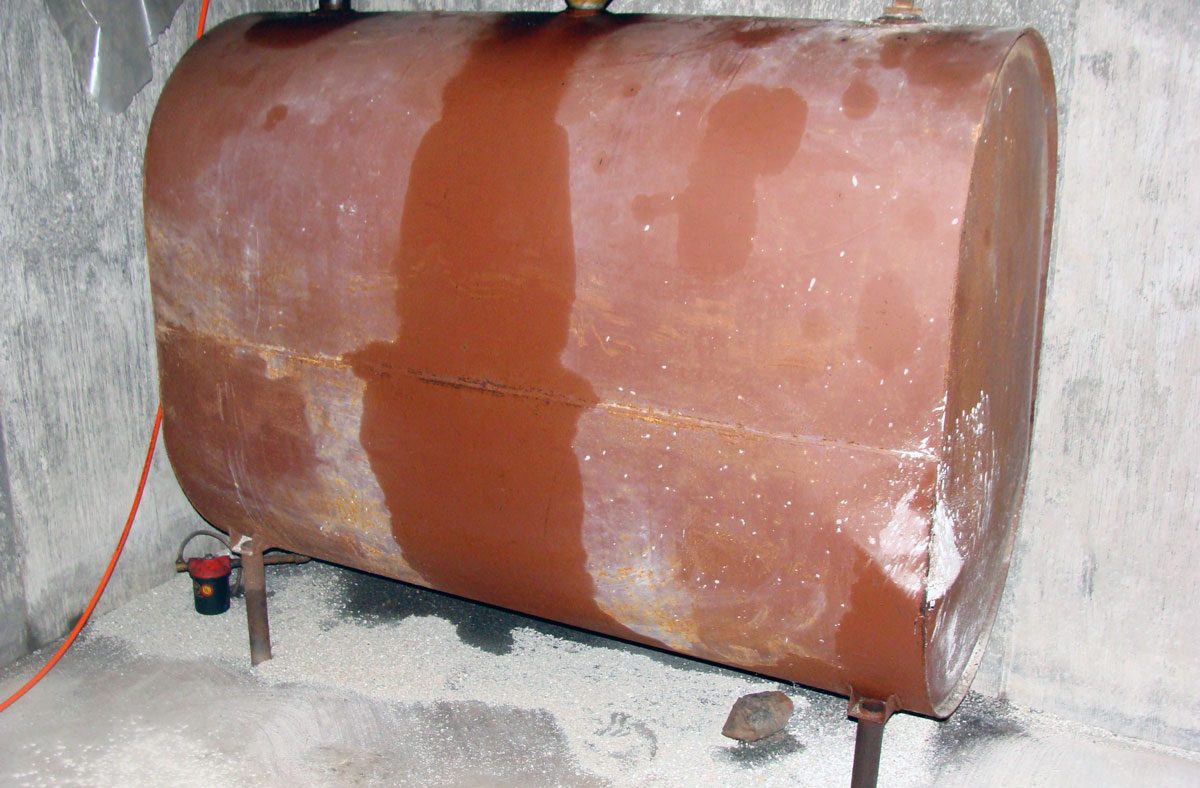No. 2 fuel oil is used as a fuel for residential heating systems in locations throughout the United States, Canada, Ireland, and the United Kingdom. The No. 2 fuel oil is generally stored in an aboveground storage tank (AST) or underground storage tank (UST) and is fed to the heating system via a copper No. 2 fuel oil supply line. Environmental concerns can arise if a release were to occur from the AST and/or the heating system components.
Preventive Maintenance
It is important to have a licensed professional conduct annual preventative maintenance to the heating system in an effort to minimize the risk of a release and ensure the system is operating properly and efficiently. The preventative maintenance should include the following: a mechanical inspection, a safety inspection, a filter change and cleaning, and a combustion analysis and efficiency test. An annual inspection of the AST is generally excluded by the maintenance company. Regular maintenance will help to avoid system failures during peak seasons.
Industry Standards
National Fire Protection Association (NFPA) 31 – Standard for the Installation of Oil-Burning Equipment is the minimum requirement for the installation/upgrade of oil burning equipment. Other Local codes may also be applicable in some cities and states. The local jurisdiction should always be referenced when replacing or upgrading a residential heating system.
Cause and Origin of No. 2 Fuel Oil Releases
No. 2 fuel oil releases can occur in many ways. Common causes for No. 2 fuel oil releases include the following:
- Corrosion – According to the National Association of Corrosion Engineers, corrosion is “the destruction of a substance (usually a metal) or its properties because of a reaction with its environment.” Depending on the conditions, corrosion can occur on the storage tank or on the components of the heating system.
- Shear Fracture – A sudden event that causes a break in the No. 2 fuel oil supply line and/or it’s connections.
- Professional Liability – Actions taken by a delivery or service company that results in a release. Some actions include improper installation, overfill/over-pressurization during delivery, use of pressurized gas, and accidental.
Benefits of Expert Involvement
Experts have the appropriate training to investigate the cause and origin of a No. 2 fuel oil release, determine the necessary response activities, the extent of the release, identify any potentially responsible parties, and can determine the appropriate remedial efforts and regulatory reporting necessary to correct the environmental release. Quick response times by environmental experts can be beneficial in managing/reducing cleanup costs and determining the reasonableness of the work being performed.
How Can VERTEX Help?
VERTEX has a team of environmental professionals that are equipped to assist in evaluating No. 2 fuel oil releases to the environment or compliance issues that may arise associated with the residential heating system. VERTEX can respond to environmental releases promptly in order to determine the cause and origin of a loss, document the emergency response activities, and opine on reasonableness (in real-time). Quick response times are paramount in managing the overall project costs.
VERTEX’s claim management services assist in moving remedial projects to regulatory closure in a quick and cost-effective manner. VERTEX will work with all parties involved in reviewing cost proposals and invoices for reasonableness and communicate timely to keep all parties informed of the current site status and anticipated future site activities.
To learn more about VERTEX’s Environmental Consulting and Environmental Claims Consulting services or to speak with an Environmental Claims Expert, call 888.298.5162 or submit an inquiry.
Craig Buhowski
Project Manager



